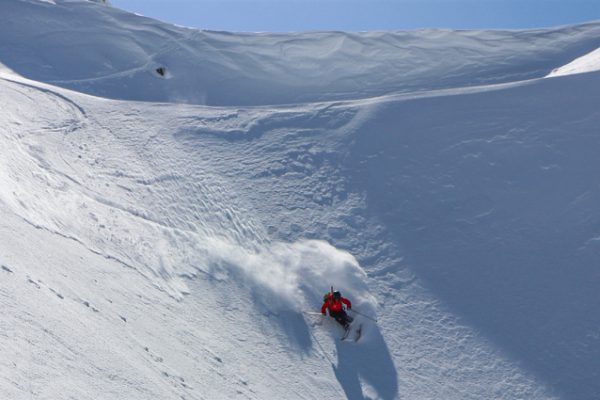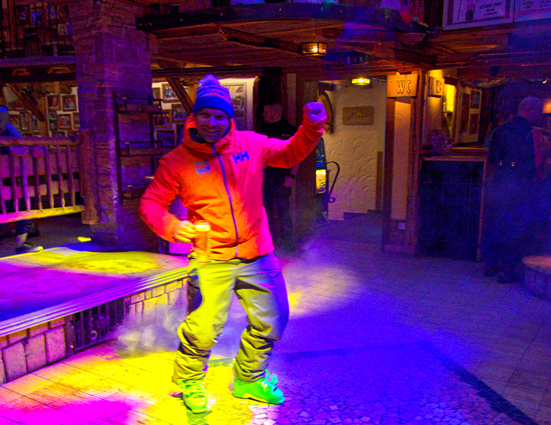
Instructors are often asked, “Where should my arms be?” Back in the day, ski instructors could make an entire season out of endlessly and minutely adjusting the arms of their students. Those days are thankfully gone. In today’s more enlightened times, it has finally been recognized that the primary purpose of our hands in skiing is to hold a beer.
Because our skis are attached to our feet, we spend a lot of time focusing on the lower body when developing a skier. However, that’s not to say we can just let our arms hang, flail and flap from our shoulders independently. Our arms, and by extension our upper body, still have a role to play in skiing.
As in any balance sport, arms pushed wide and low promote good balance. It’s no coincidence that the geometry of a mountain bike, dirt bike or even a horse rider’s bridle places the arms and upper body in an “athletic position.” They are all designed with a set of assumptions in mind: first, that the rider has arms; and second, that he wants to use them to stay in balance.
Those who took high school physics may remember arms held wide and low help to counter the forces of rotational momentum, which inevitably develop as a skier turns. Imagine a skater spinning on the ice. When he wants to spin he keeps all parts of his body close to the vertical axis, and when he wants to stop, he moves his extremities out from the vertical axis.
It’s often said, semi-derogatorily, that all you need to know about skiing is to keep your hands out and forward and that will somehow magically keep you in balance. This is absolute arse gravy. It’s possible to be way off centre yet still have your arms thrust forward like a pro. The truth is that the arms being pushed forward is a useful cue to assist a skier in staying centred, but it doesn’t of itself guarantee effective balance.
When skiing, think of that mountain bike, or horse. Place your upper body and arms in a shape similar to what you would in those other activities, and shred like a pro. You’ll notice an improvement in your fore/aft balance, and better control over the forces of rotation.
from December/January 2021 issue




